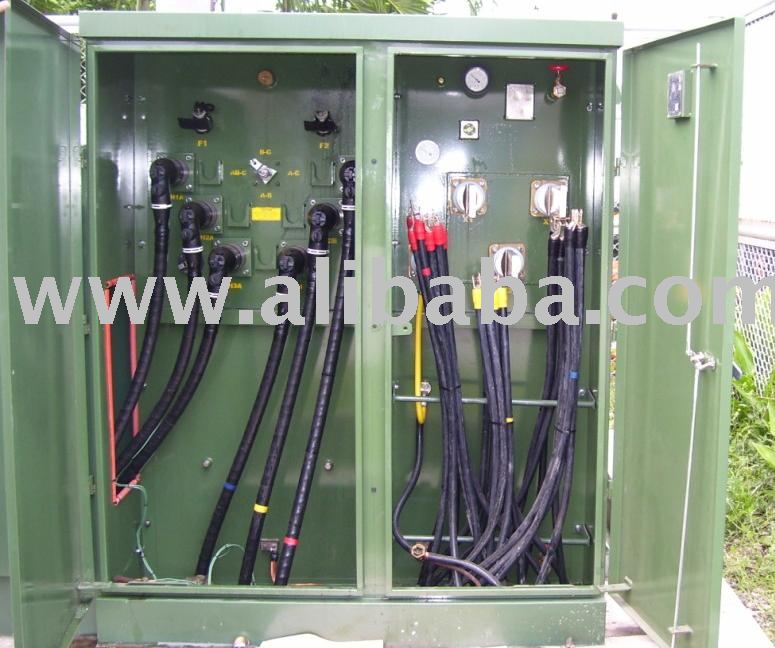-
1
- #1
ters
Electrical
- Nov 24, 2004
- 247
Please ignore my post just below this one, it is a duplicate - accidently pressed submit before finishing Subject line.
A small wind farm of five units connects to a 44kV utility line. The facility is operating for about 1 year and experiences high level of gasses at turbine step up transformers 34.5kV/690V. Turbines are 2.2MW operate at 690V, step up transformers are 2.5MVA, while the main 44/34.5kV transformer is 11MVA.
Here is a long list of fact and things which were measured, analyzed or tried:
Gassing only occurs at all 2.5MVA units while the main 11MVA transformer is fine.
2.5MVA transformers are connected to full power converters, AC-DC-AC.
The oil gas analysis (done a number of times) indicates an increased level of hydrogen, ethane, methane and acetylene, which suggests presence of partial discharge but it is unclear what may be causing it. Content of gasses increases over time ad similar rate.
The entire 34.kV collector, which is a total ~20km long is undeground cable. There is also several km of 44kV cable before the facility connects to the utility OH line.
Gas level is unrelated to the collector topology and geography – there are two 2.5 transformers close to the main substation, and one shows a much higher (2 times) level of gas than the other, and the same applies for other two units which are >10km from the sub.
Total harmonic distortion is measured and found to be in the range of 2-3% at full load, which should not be causing gassing as the full load on a wind farm rarely occurs. Harmonic content is much higher at low load but that should not matter much in terms of gassing.
The owner ordered a replacement transformer which was made a bit larger, 2.6MVA and for significantly higher V/Hz ratio then the original ones, but after several months in operation that transformer developed the same problem. The harmonic factor for this transformer remained 1, as it was for the original unit.
Various P-Q analyzers were used to measure V, I, P, Q and TDH over a longer period of time and capture events, but nothing particularly significant was captured.
Except it was identified that when utility is switching a large 30MVA capacitor bank some 30km away on the same feeder, an overvoltage spike in the range of 150% and lasting about half cycle reaches the 2.5MVA transformers, but the capacitor is being switched relatively infrequently, the average is probably less than one per day.
Turbine converter reactive capability is higher than transformer rating (2.7MVA vs 2.5MVA) and under certain operating conditions units may operate with a low power factor, but transformer apparent power still very rarely exceeds 2.5MVA and may only occur for a short period of time when only one or two units are operating at low kW output. In which cased they will be ordered by an automatic controller to import a larger amount of VARs from the grid (the facility operates at fixed power factor mode).
Various sources indicate that many wind facilities experience somewhat increased level of transformer gassing, but that this phenomena is still poorly understood and science is still to explain it. There are various hypotheses why this is occurring and mine would be that this problem may have something to do with the fact that wind turbines are the most unstable generators by far in terms of power output and event not that many loads are as unstable. They are not as bad as arc furnaces but have a lot of similarities except changes are slower.
However, transformer gassing at this facility has already reached very alarming levels, and there must be something else in addition to that phenomena which affects many other facilties. But we seem to be running out of ideas what to try next. Any comments would be greatly welcomed!
Than you for your time to read this long story

